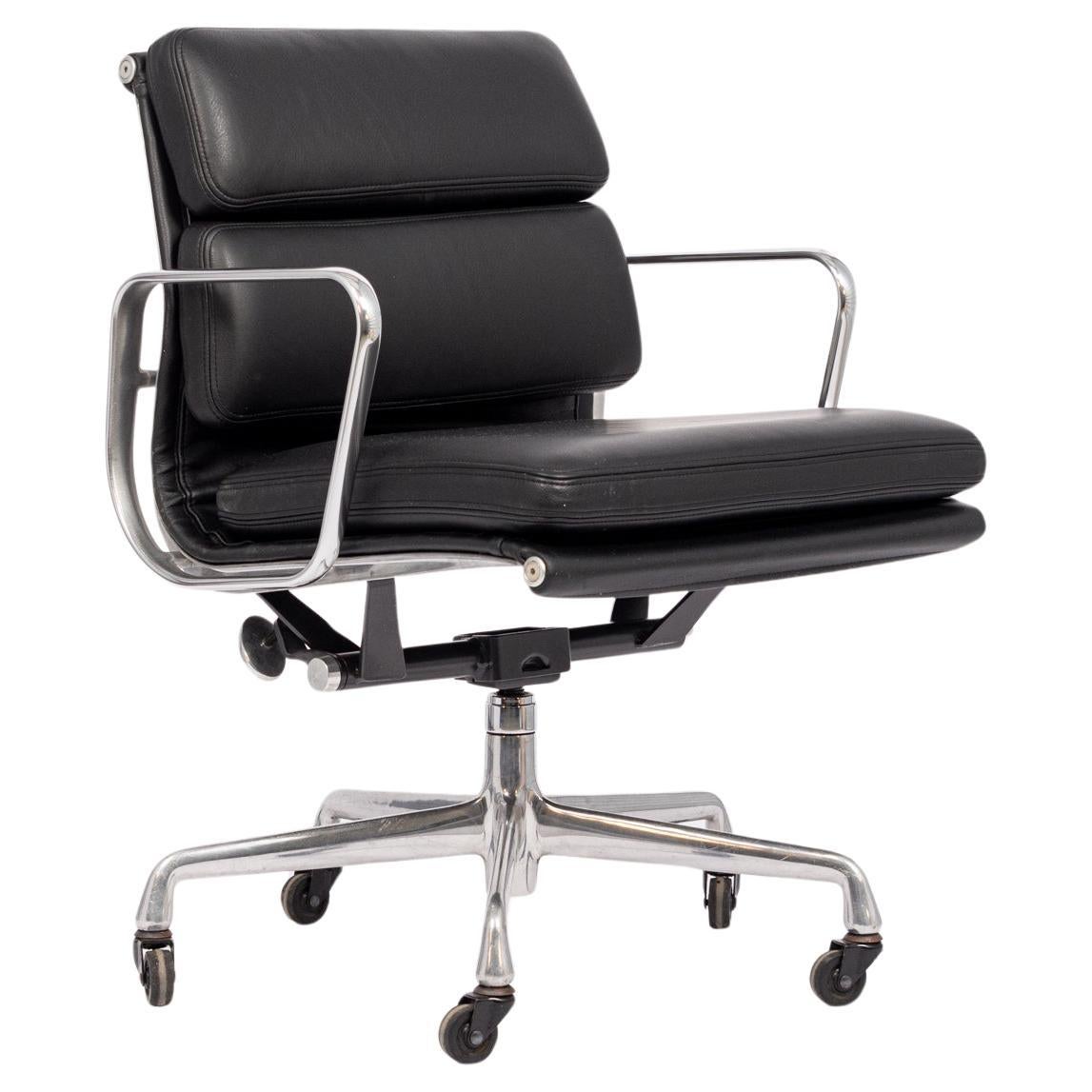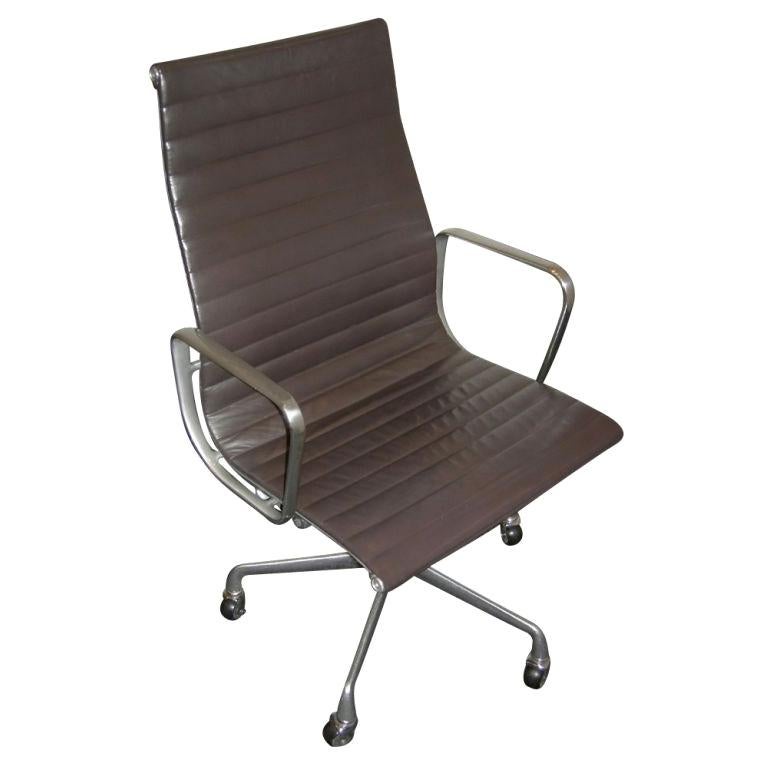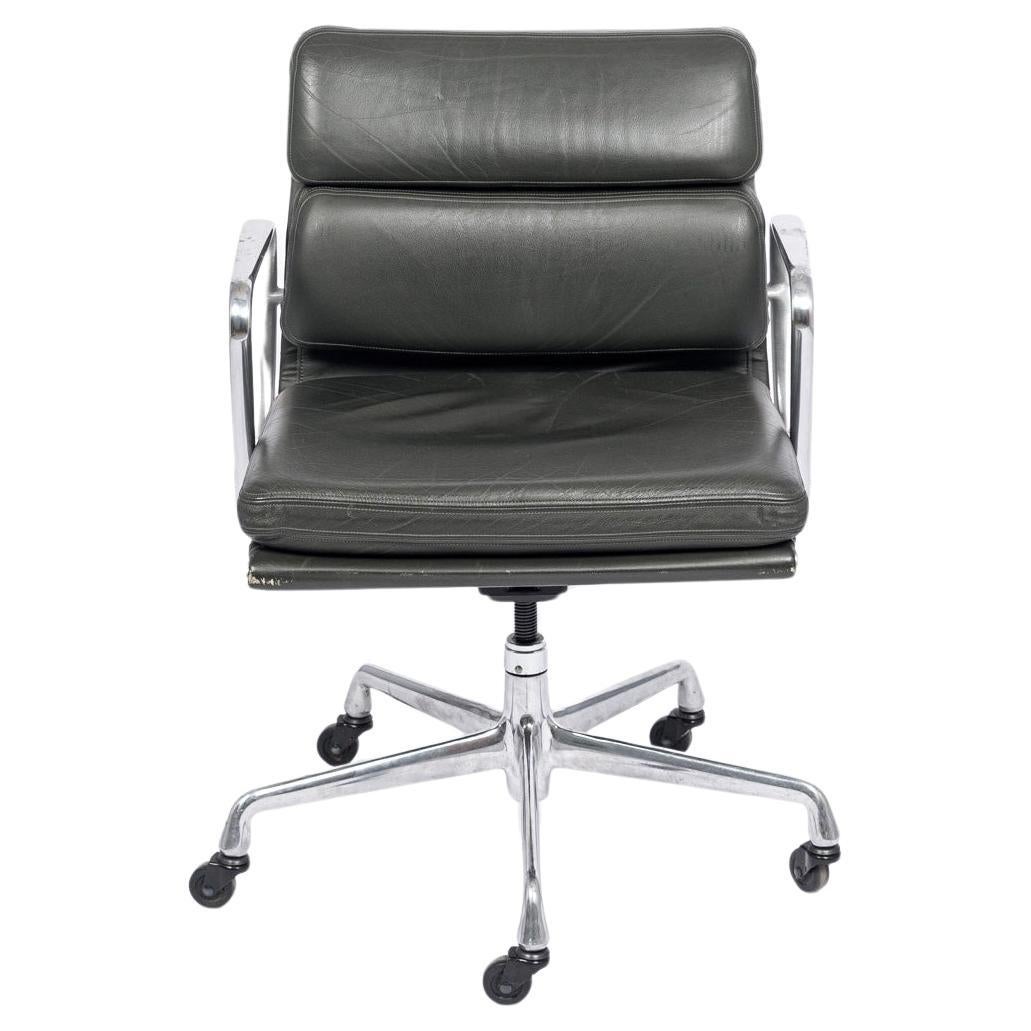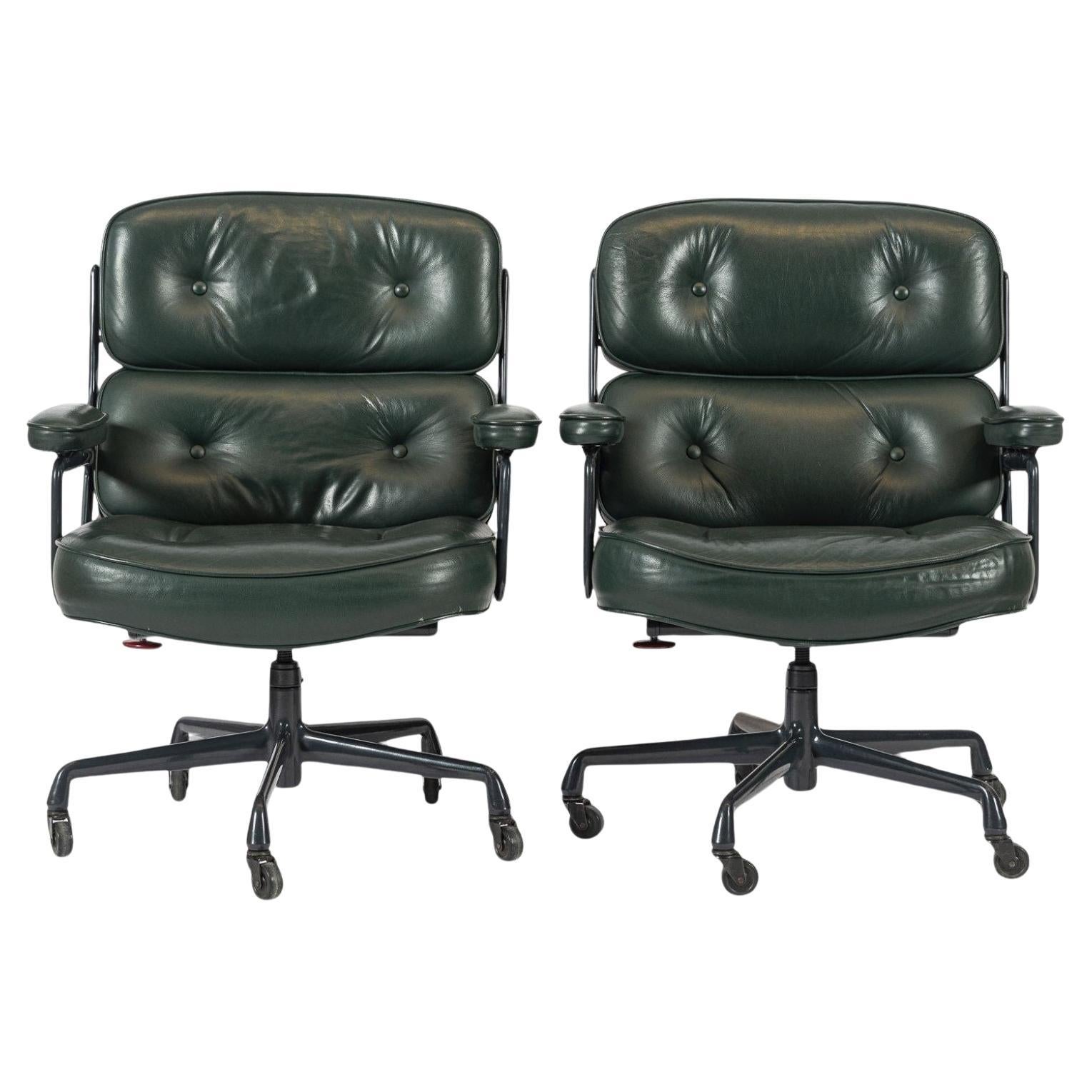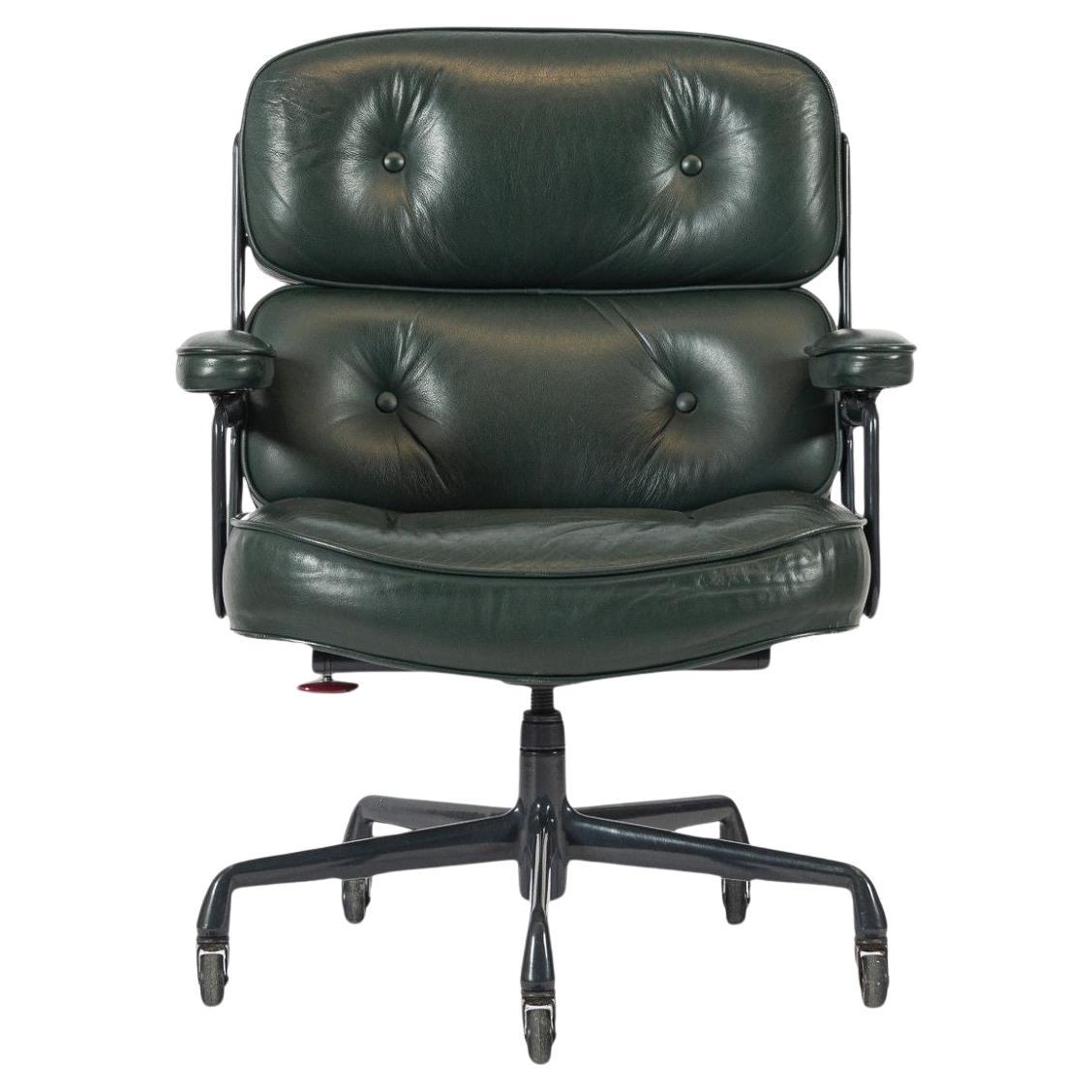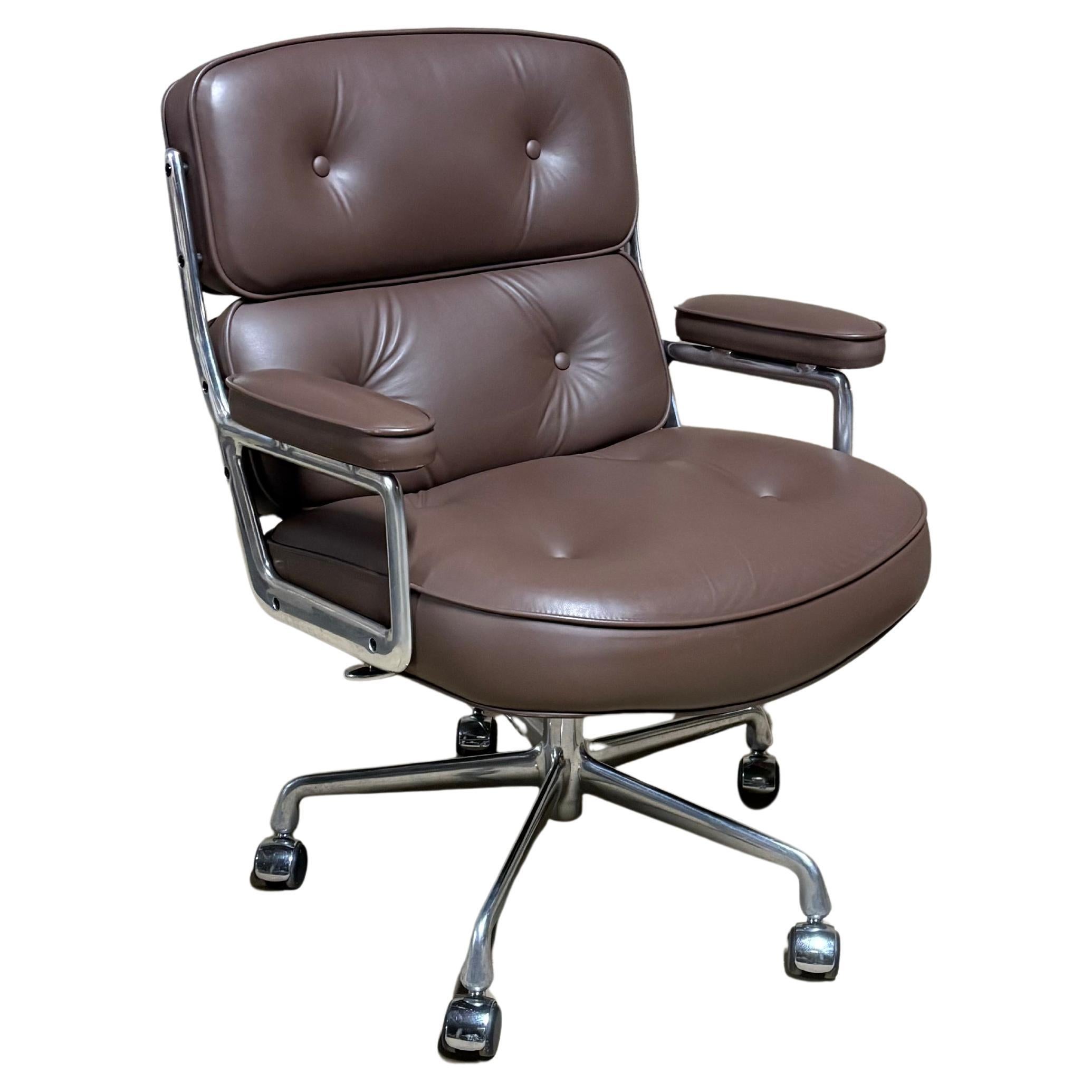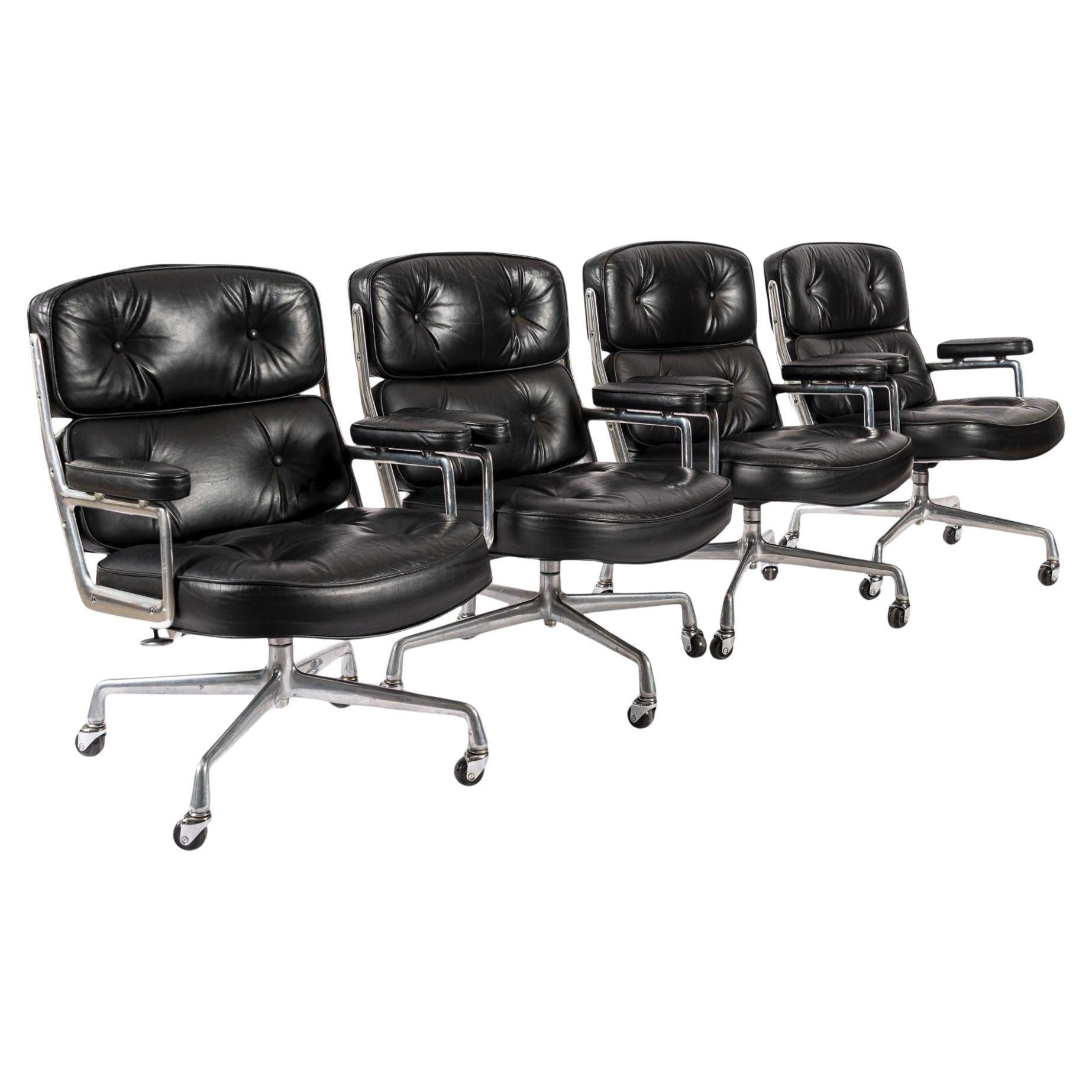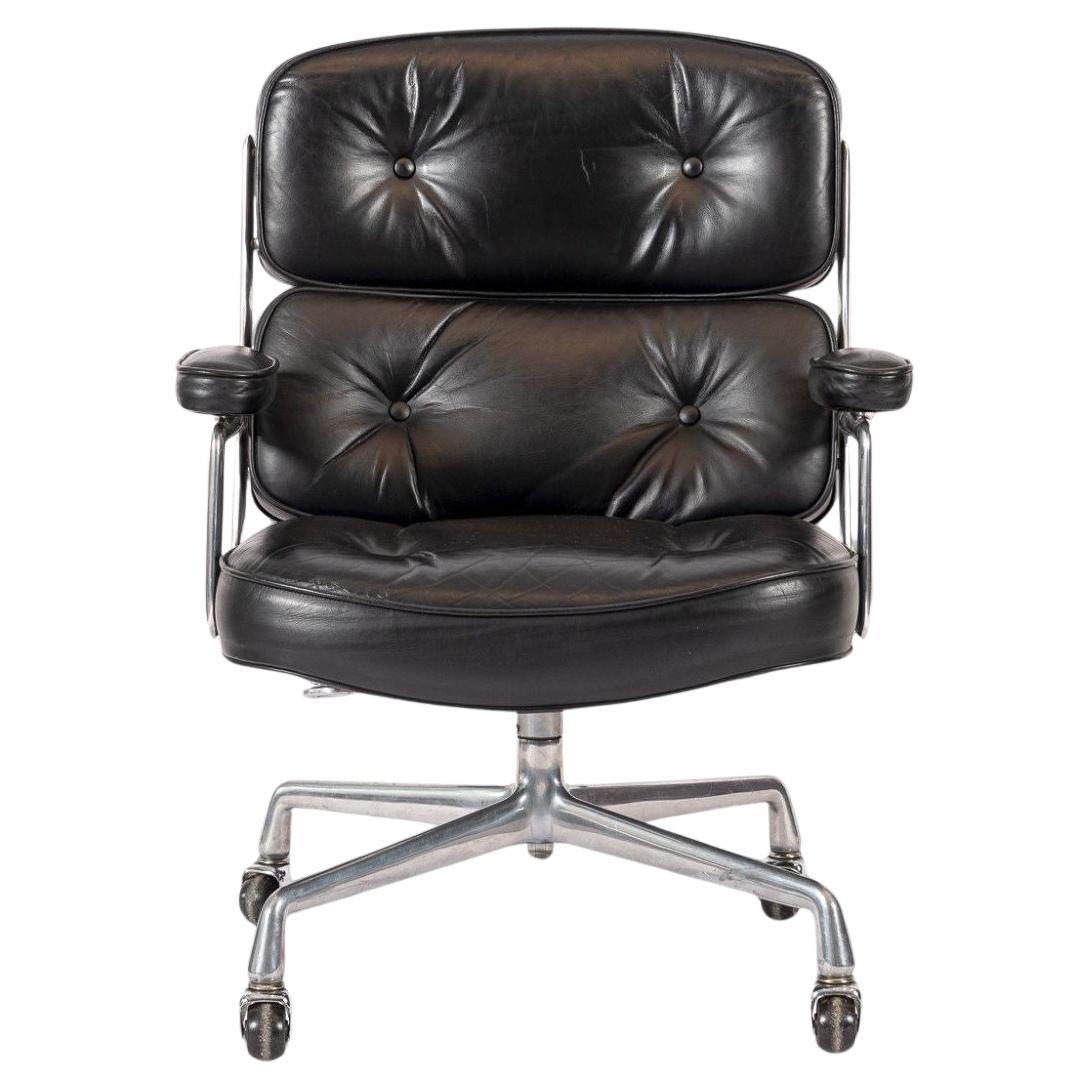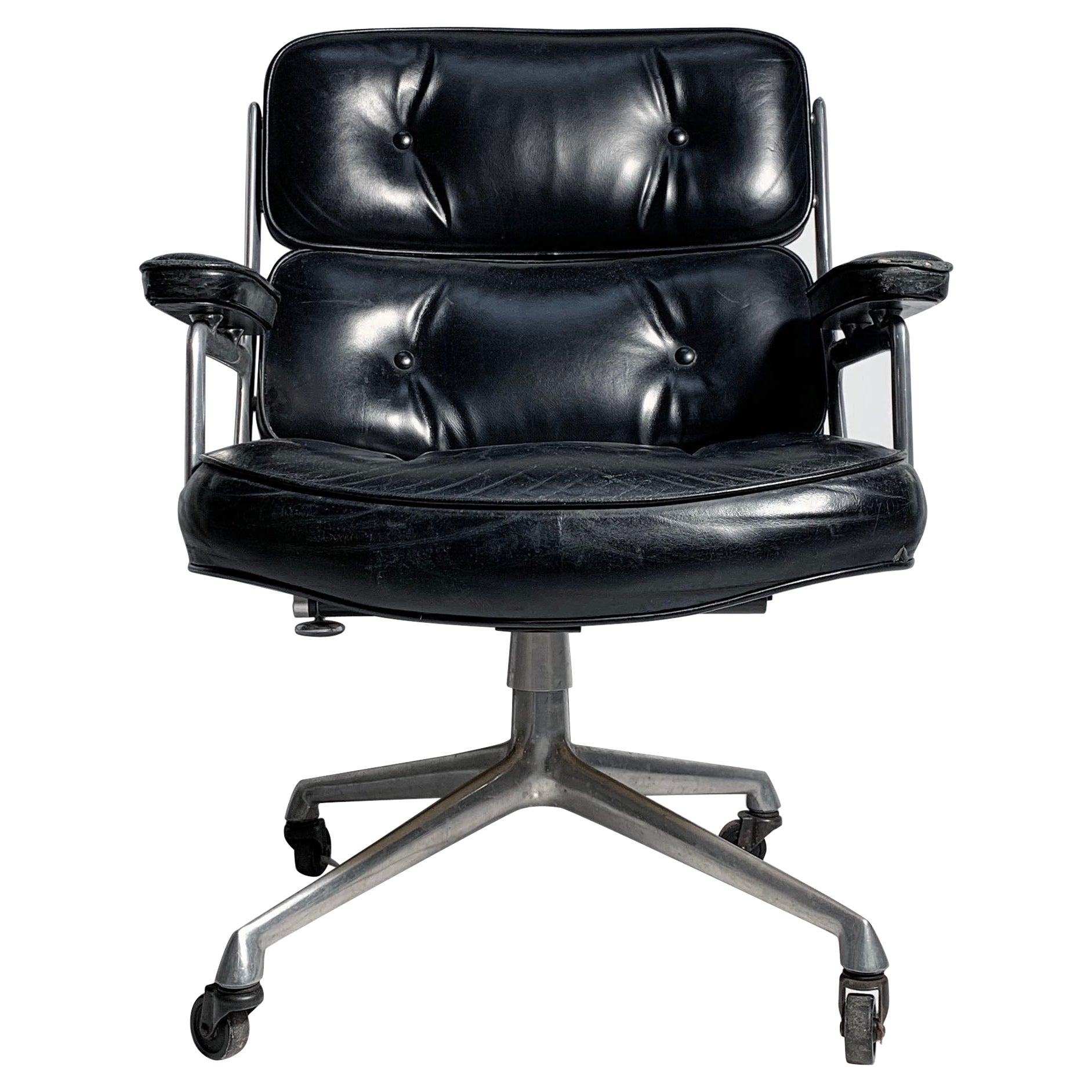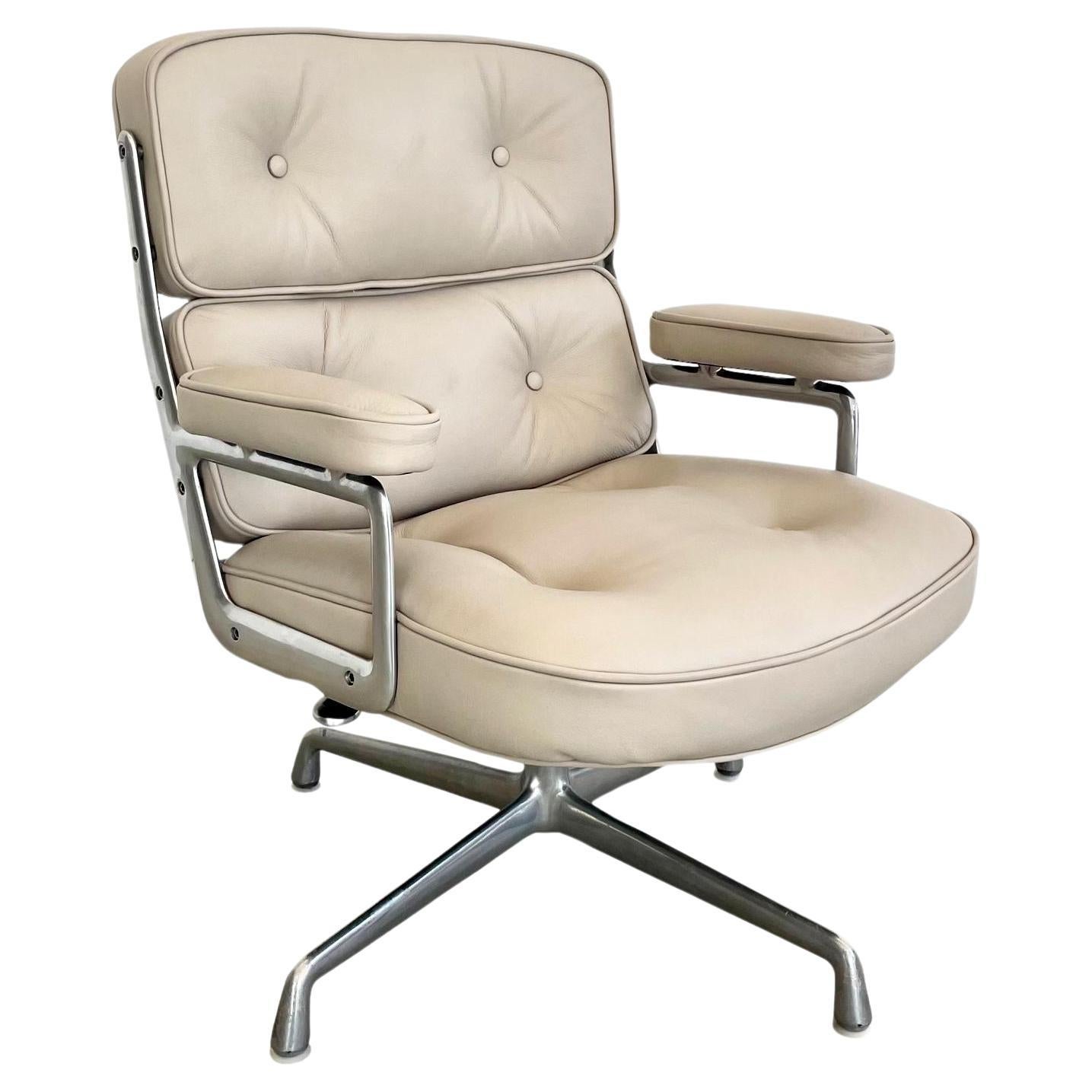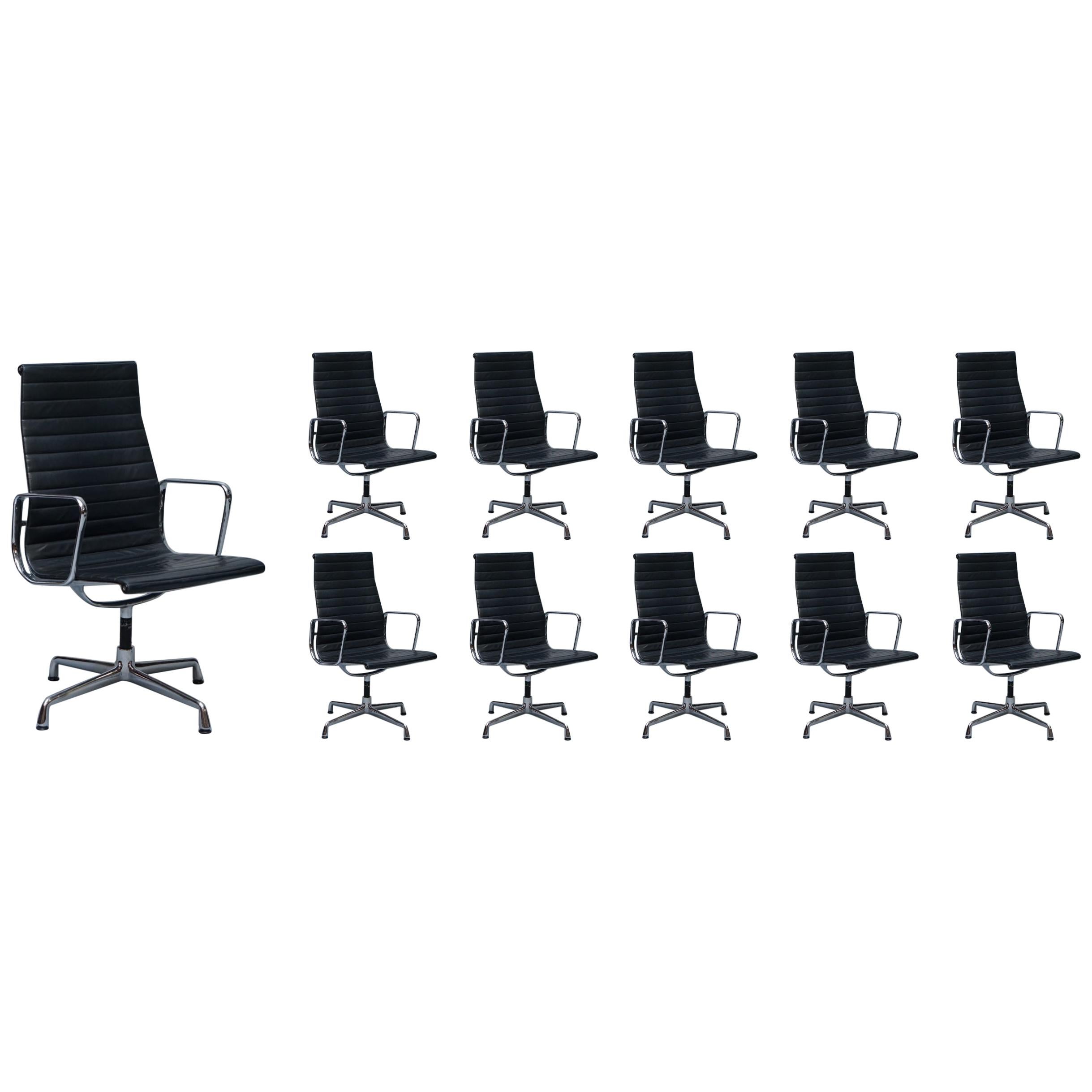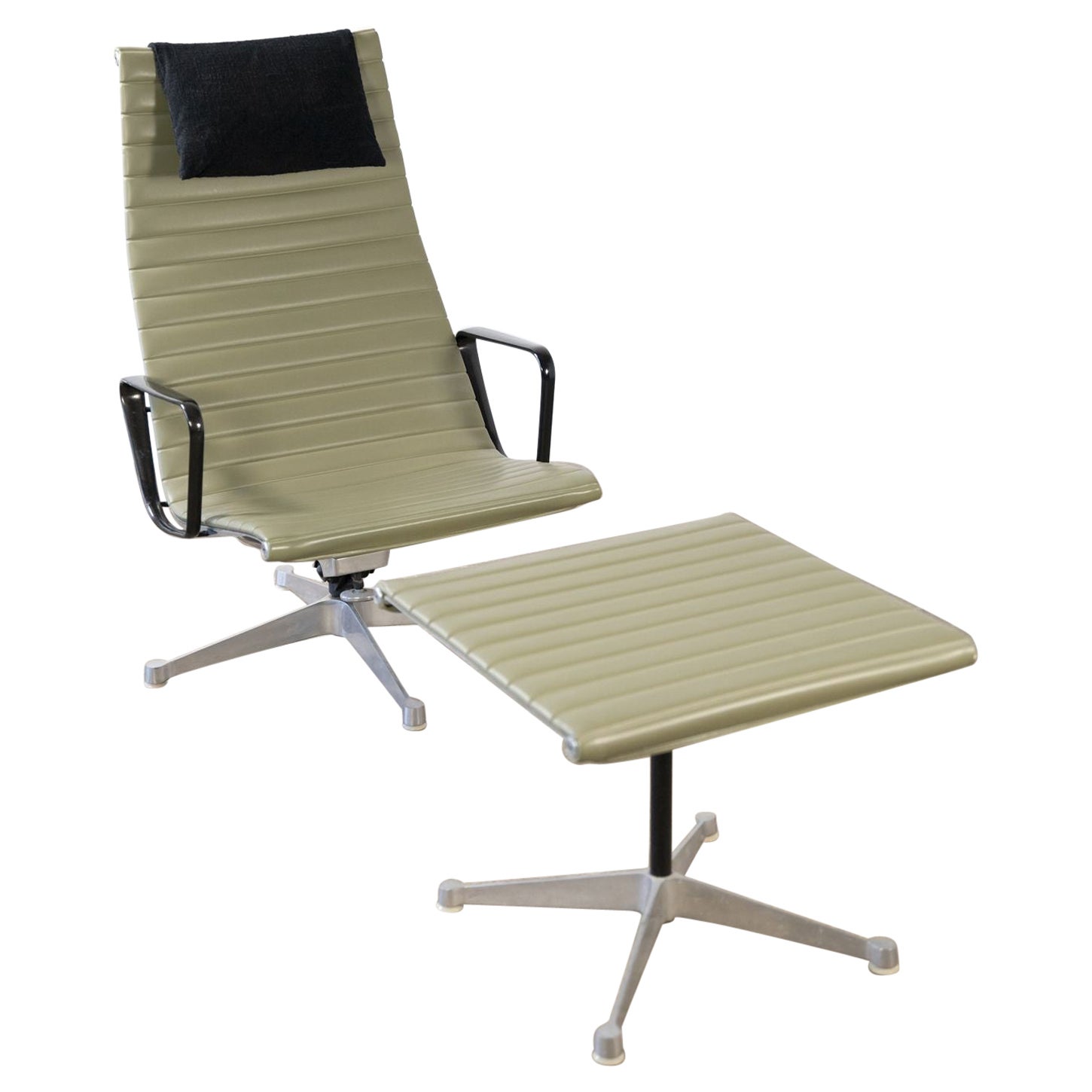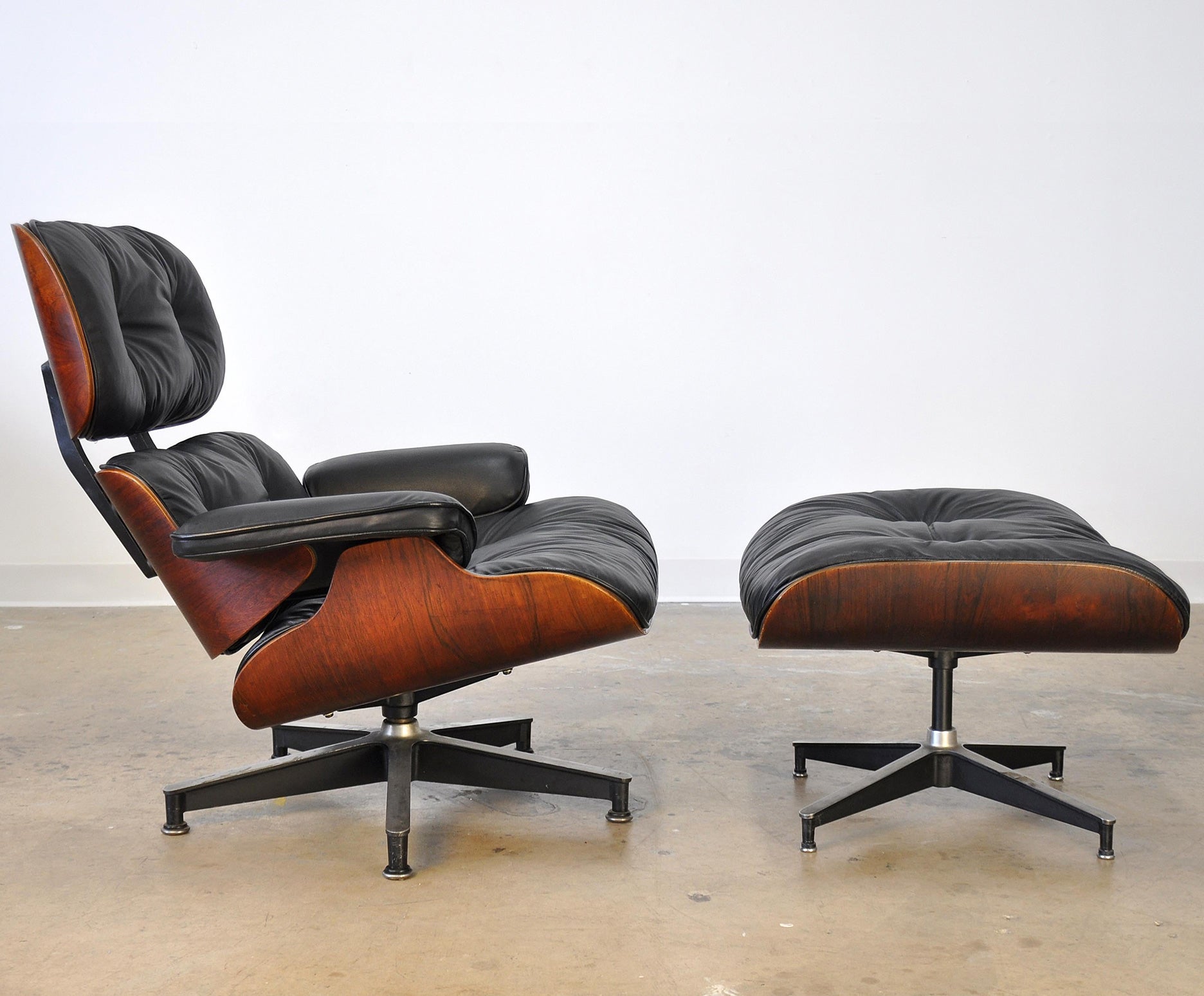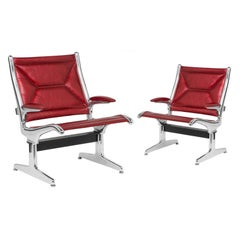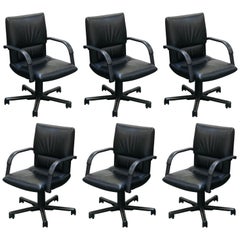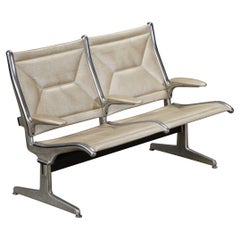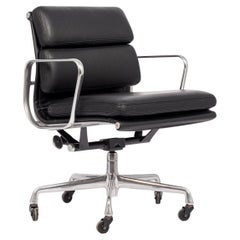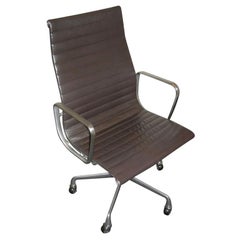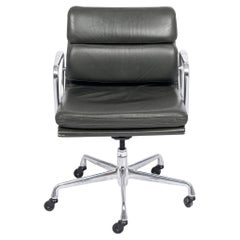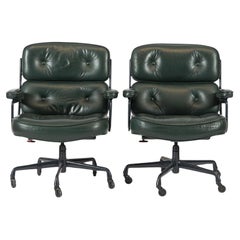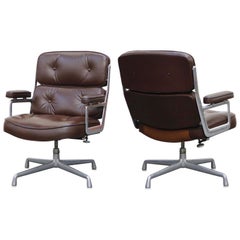
Pair of Time Life Lounge Chairs by Charles Eames for Herman Miller, 1977, Signed
View Similar Items
Pair of Time Life Lounge Chairs by Charles Eames for Herman Miller, 1977, Signed
About the Item
- Creator:
- Design:
- Dimensions:Height: 33 in (83.82 cm)Width: 27 in (68.58 cm)Depth: 27.75 in (70.49 cm)Seat Height: 16.5 in (41.91 cm)
- Sold As:Set of 2
- Style:Mid-Century Modern (Of the Period)
- Materials and Techniques:
- Place of Origin:
- Period:
- Date of Manufacture:April 26, 1977
- Condition:Very good to excellent vintage condition. Prime signed collectors example. Ready for immediate use.
- Seller Location:Los Angeles, CA
- Reference Number:1stDibs: LU1330219677022
Eames Lounge Chair and Ottoman
Long before it was the pièce de résistance in a collector’s office or an upscale bachelor pad — landing in ample design magazines, on television and in well-appointed offices over the years — the Eames lounge chair was a fresh, subversive new take on a classic club chair and a culmination of experimentation by its inventive creators.
Charles and Ray Eames (1907–78; 1912–88) met while studying at the Cranbrook Academy of Art, the prestigious Michigan institution that drew such illustrious design minds as Florence Knoll, Eero Saarinen and more. After graduation, they formed the Eames Office, where they spent much time exploring and formulating new techniques in bent plywood and fiberglass with the goal of producing affordable furniture for a mass market. The Eames lounger, on the other hand — with its signature wood-grain back and sumptuous (usually black) leather seat — was different.
While the couple’s DCW chairs, introduced in the 1940s, prioritized ease of production and affordability of materials, the lounge, which debuted in 1956, was Charles and Ray’s interpretation of luxury furniture. And to the Eameses, luxury meant, above all, comfort. The couple famously called the lounge chair and ottoman “a special refuge from the strains of modern living” and described their design as having the “warm receptive look of a well-used first baseman’s mitt.”
Although the seat makes use of the same bentwood technique the Eameses pioneered using their famous “Kazam! Machine” (a handmade apparatus for molding plywood) for their DCW chairs, it tops off this frame with supple leather over a plump, upholstered shape.
Ever fascinated by ergonomics, the Eameses carefully calibrated the pitch of the seat. It has enough flexibility for comfort but not so much that stability is sacrificed. This precise shape comes by way of three connected plywood pieces, which, on early models were covered in five layers of Brazilian rosewood; owing to an early 1990s-era embargo on the material, however, the Brazilian rosewood has since been replaced with either ash, walnut or palisander. The accompanying ottoman is the icing on the comfort cake, inviting the sitter to quite literally kick back and relax.
Today, imitations of the Eames lounge chair and ottoman abound. The seat is currently manufactured by both Herman Miller and Vitra, and when it was launched initially by the former, the supporting marketing blitz emphasized the chair’s versatility — an effort that, given the seat’s current ubiquitousness, was clearly successful.
Charles Eames
The legacy of Charles Eames looms large in design. In partnership with his wife, Ray, Charles was at the forefront of pioneering innovation in the use of molded plywood for furniture making. The Eameses’ cheerful and inviting work has endured among the most important advancements in the history of 20th-century design.
Together, visionary mid-century modern duo Charles and Ray Eames introduced a wide range of renowned furniture to the postwar market, including iconic designs such as the Eames lounge chair and ottoman, the wildly colorful birch plywood-and-plastic-laminate Eames storage unit, the Eames compact sofa and more. The designers were trailblazers in molded plywood furniture and brought lively organic form to metal and plastic.
Charles Eames studied architecture at Washington University in St. Louis. He traveled to Mexico and Europe, and experienced firsthand the work of designer-architects Le Corbusier and Ludwig Mies van der Rohe. In 1930, upon returning to Missouri, Eames opened an architecture practice with Charles M. Gray but later moved to Michigan in 1938. He received a fellowship at Cranbrook Academy of Art, which would become a breeding ground for the stars of mid-century design. Eames continued his architecture studies at Cranbrook and also taught in the design department.
In 1940, Eames met his future wife, artist and designer Beatrice Alexandra "Ray" Kaiser, who was studying at Cranbrook under Abstract Expressionist painter Hans Hofmann. Charles teamed up with another Cranbrook instructor, Finnish-American designer Eero Saarinen, to explore the possibilities of plywood for use in furniture design.
With support from Ray, Charles and Eero created chairs and case pieces and submitted them to the “Organic Design in Home Furnishings” competition at the Museum of Modern Art in New York City — among them was the groundbreaking organic Side chair made of molded plywood with maple legs. It was upholstered by Heywood-Wakefield. This exhibition is considered critical by many to the popularization of what is known as mid-century modernism. Eames and Saarinen won first place for their submissions to the competition.
Charles and Ray were married in 1941 and soon after moved to Los Angeles, California, and lived in an apartment building designed by architect Richard Neutra. Charles worked on set design at MGM, and at night, in a humble workshop they established in the guest bedroom, he and Ray experimented with molded plywood on a homemade device they called the “Kazaam!” machine. In 1942, the couple won a U.S. Navy contract to create molded plywood leg splints that would be used to support wartime medical efforts. Soon, the Evans Product Company was making the splints and the Eameses opened the famed Eames Office and studio.
The Eameses’ innovative use of wire framing, molded plywood and applied fabrics caught the attention of many notable figures in interior design and architecture, including George Nelson, director of design at Herman Miller, a now-legendary modern furniture manufacturer. The company enlisted the Eameses’ talents and was eventually home to the couple’s classic pieces such as the Eames DCW chair and the DCM chair.
Find an extensive array of vintage Charles Eames seating, tables and case pieces on 1stDibs.
More From This Seller
View AllVintage 1960s American Mid-Century Modern Chairs
Aluminum
Vintage 1960s American Mid-Century Modern Benches
Aluminum
1990s Swiss Modern Office Chairs and Desk Chairs
Leather, Plastic
Vintage 1960s American Mid-Century Modern Loveseats
Aluminum
2010s Italian Modern Office Chairs and Desk Chairs
Chrome
Vintage 1980s American Modern Office Chairs and Desk Chairs
Metal
You May Also Like
Early 2000s American Mid-Century Modern Office Chairs and Desk Chairs
Aluminum, Steel
Late 20th Century American Mid-Century Modern Swivel Chairs
Aluminum
Early 2000s American Mid-Century Modern Office Chairs and Desk Chairs
Aluminum, Steel
1990s American Mid-Century Modern Office Chairs and Desk Chairs
Aluminum, Steel
1990s American Mid-Century Modern Office Chairs and Desk Chairs
Aluminum, Steel
21st Century and Contemporary American Modern Office Chairs and Desk Chairs
Leather
Recently Viewed
View AllRead More
The 21 Most Popular Mid-Century Modern Chairs
You know the designs, now get the stories about how they came to be.
Iconic Furniture Makes This 1958 Midwestern Home a True Mid-Century Gem
Designer Susan Yeley turned to 1stDibs to outfit an Indiana home with standout pieces that complement its modernist style.
